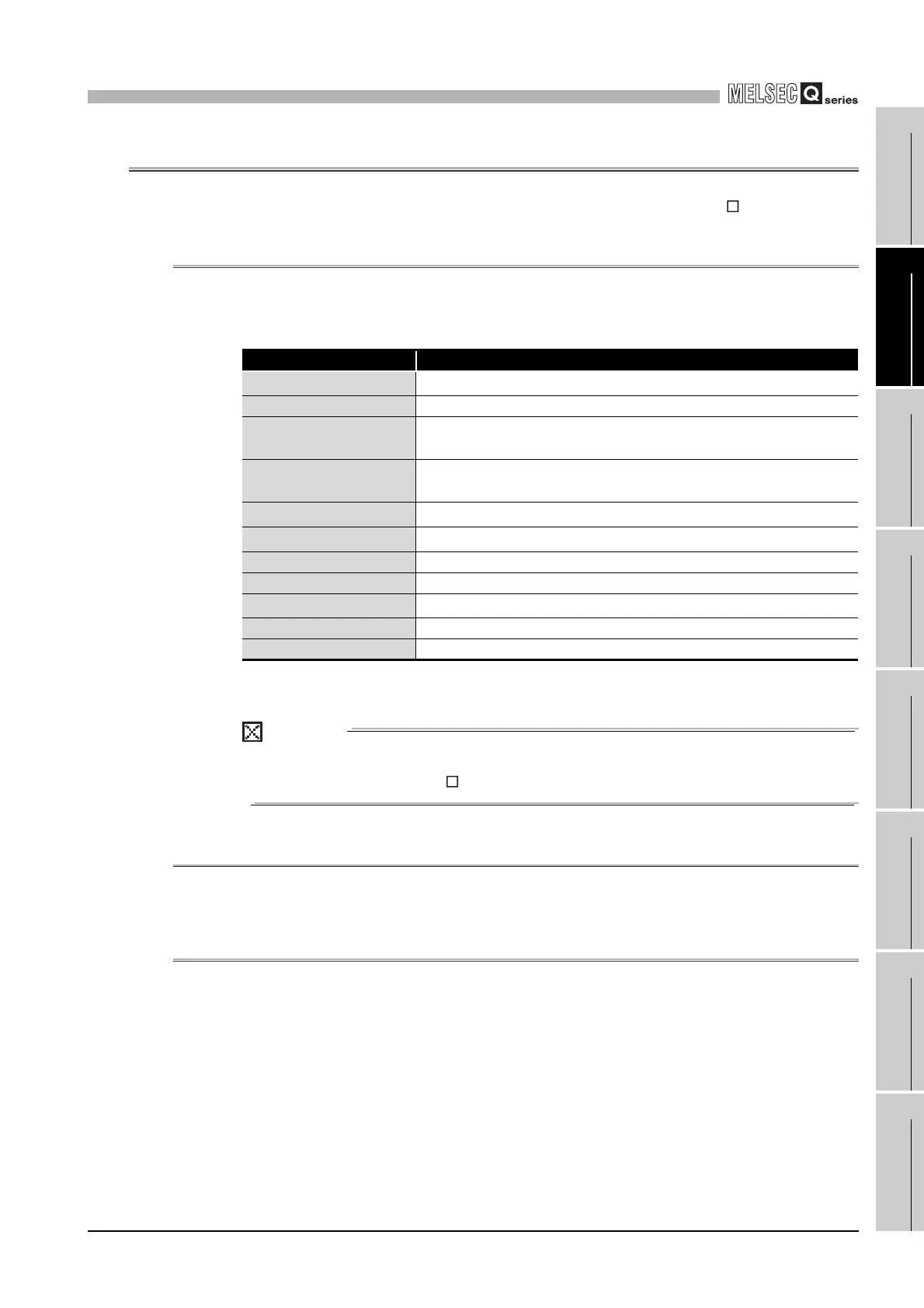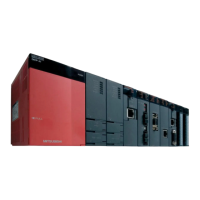10
FUNCTIONS AND PROGRAMMING
10.3 Programming Using MELSEC Data Link Functions
10.3.1 MELSEC data link function list
10 - 36
9
UTILITY OPERATION
10
FUNCTIONS AND
PROGRAMMING
11
OVERVIEW OF
MULTIPLE CPU
SYSTEM
12
MULTIPLE CPU
SYSTEM
CONFIGURATION
13
MULTIPLE CPU
SYSTEM
CONCEPT
14
COMMUNICATIONS
BETWEEN CPU
MODULES
15
PARAMETERS
ADDED FOR
MULTIPLE CPU
16
PRECAUTIONS FOR
USE OF AnS SERIES
MODULE
10.3 Programming Using MELSEC Data Link Functions
This section explains the MELSEC data link functions contained in SW PVC-CCPU.
10.3.1 MELSEC data link function list
The following lists the MELSEC data link functions.
* 1 If an address indicated by an argument pointer is illegal, the return value of the function is a
pointer address specification error (-28628).
POINT
For details of the MELSEC data link functions, refer to the MELSEC data link
function HELP of SW PVC-CCPU.
10.3.2 Programming procedure
Refer to Section 10.2.2 for details of the programming procedures.
10.3.3 Creating new project of user program and compiling method
Refer to Section 10.2.3 for details of new project creation and compiling method.
Table10.11 MELSEC data link function list
Function name Description
mdOpen
*1
Open a communication line.
mdClose Close a communication line.
mdSend
*1
• Perform batch write of devices.
• Send message data (SEND function)
mdReceive
*1
• Perform batch read of devices.
• Receive message data (RECV function)
mdRandW
*1
Write devices randomly.
mdRandR
*1
Read devices randomly.
mdDevSet Set bit device.
mdDevRst Reset a bit device.
mdTypeRead
*1
Read the type of programmable controller CPU.
mdControl Remote RUN/STOP/PAUSE
mdInit Refresh the programmable controller device address table.









